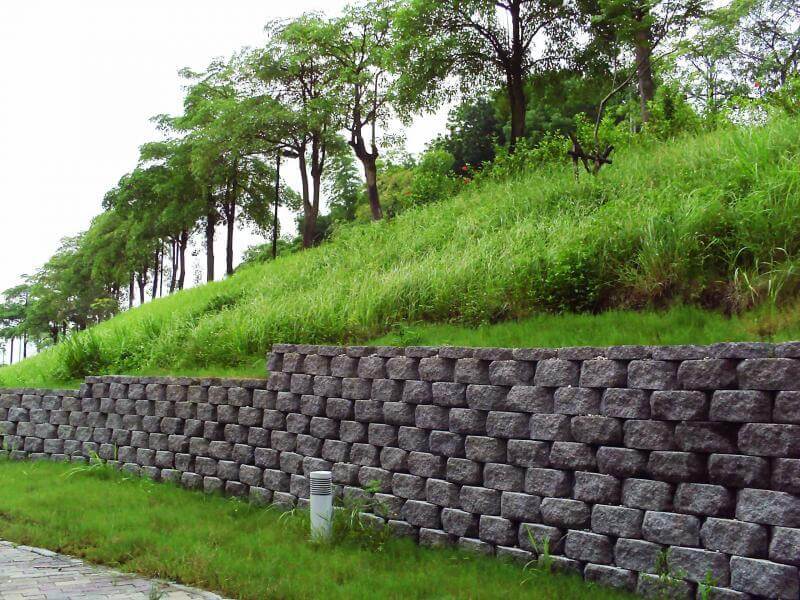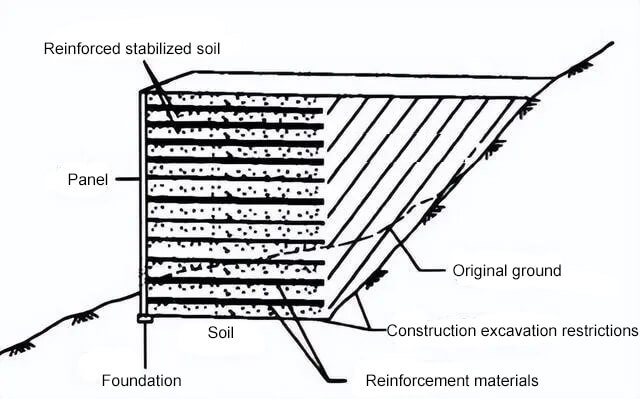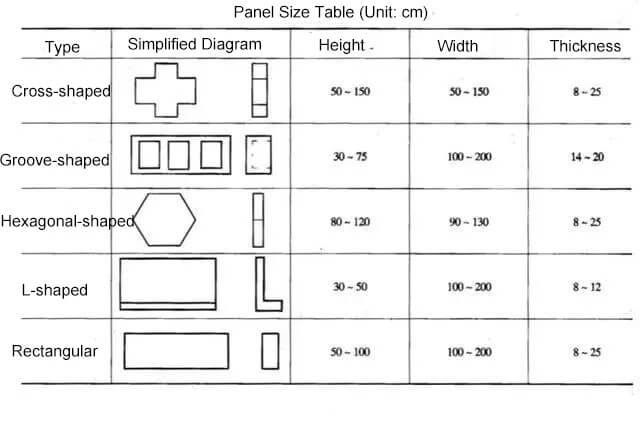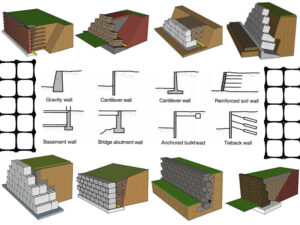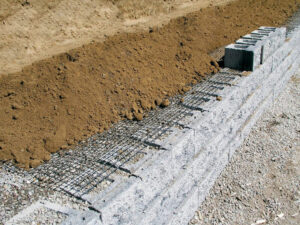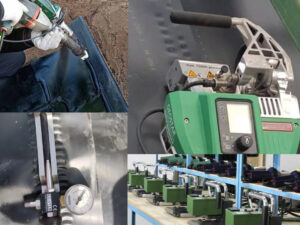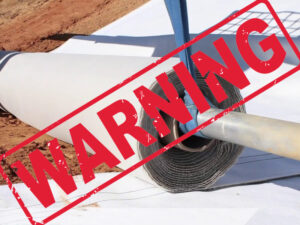Reinforced earth retaining walls use geogrid as reinforcement material combined with fill to form reinforced soil, also known as a reinforced stabilizing body. Finally, the geogrid reinforced earth retaining wall is completed with concrete wall panels.
In this article, QIVOC will primarily introduce the definition of geogrid retaining walls, requirements for components, construction, costs, and other information.
OK, let’s get started!
Definition of Geogrid Reinforced Earth Retaining Walls
Reinforced soil is a composite material formed by adding reinforcement materials (such as geogrid) to the soil, which can improve the soil’s shear strength and increase the stability of soil engineering.
Reinforced earth retaining walls are a new type of supporting structure, consisting of three main components: concrete wall panels, reinforcement materials, and fill.
In the direction perpendicular to the wall, reinforcement materials are placed horizontally at certain intervals and heights, followed by soil compaction. The friction between the fill and the reinforcement transfers the pressure from above to the reinforcement, stabilizing the soil.
Reinforced earth retaining walls are classified as flexible structures, capable of adapting to slight deformations of the foundation. The foundation deformations caused by the fill have a smaller impact on the stability of reinforced earth retaining walls than other structures, and they require lower foundation-bearing capacity.
They are excellent seismic structures; they save space, are aesthetically pleasing; and are relatively low-cost, providing good economic benefits.
Construction Requirements for Geogrid Reinforced Retaining Walls
The construction of geogrid reinforced retaining walls includes several components: reinforcement materials, fill, wall panels, foundation, settlement joints, expansion joints, coping stones, and railings.
Each component has specific parameter requirements during construction.
1. Reinforcement Materials
Reinforcement materials refer to strip-like or mesh-like materials added to the soil to form a reinforced soil structure.
They have high tensile strength and are arranged in bundles or layers within the soil, bearing the tensile forces transmitted from the wall surface to maintain the stability of the reinforced soil structure.
These reinforcement materials are typically placed horizontally and perpendicular to the wall panels. Commonly used reinforcement materials include galvanized steel strips, geotextiles, and geogrids.
Geogrids are currently the most popular reinforcement material because they are cost-effective, sturdy, and durable, significantly reducing the construction cost of geogrid retaining walls. As a result, this material is favored in many engineering projects.
The length of reinforcement materials typically has the following specifications and requirements:
(1) For wall heights less than 3m, uniform-length reinforcement materials are used, with a length of ≥3m.
(2) For wall heights greater than 3m, the minimum length of reinforcement materials must be ≥0.8H and ≥5m.
(3) For wall heights greater than 3m, variations in reinforcement material length can be considered, but when using non-uniform-length reinforcement materials, the height of segments with equal-length reinforcement must be ≥3m.
(4) A single retaining wall should not have more than three different lengths of reinforcement materials, and the length difference between adjacent non-uniform-length reinforcement materials should be ≥1m.
2. Fill Material
Fill material should be chosen for ease of placement and compaction, and it should not be corrosive to the reinforcement materials, with good water stability.
Typically, well-graded, permeable sandy soils or gravel soils are preferred. When using clayey soils or other types of soil as fill, appropriate waterproofing measures must be implemented.
3. Wall Panels
Wall panels prevent the reinforcement materials and fill from being laterally displaced and ensure that the combination of reinforcement, fill, and wall panels forms a cohesive structure.
Typically, wall panels are made from metal, concrete, or reinforced concrete. When fine-grained soil is filled behind the wall panels, a filter layer should be provided.
Wall panels are usually assembled from precast cement concrete components, bearing soil pressure and transferring forces to the reinforcement materials through connectors.
The concrete strength of the wall panels should not be less than C20, and the panel thickness should be no less than 8 cm.
Panel shapes commonly include cross, trough, hexagonal, L-shaped, and rectangular designs.
Tips:
1. The width of the lower edge of the L-shaped panel is generally 20-25cm, and the thickness is 8-12cm.
2. The thickness of the bottom plate and flange of the grooved panel should not be less than 5cm.
To meet structural requirements at the top or corners, specially shaped panels and corner panels need to be designed.
4. Foundation
To ensure the proper functioning of the wall panels, a base is typically provided beneath them. Due to the strong adaptability of geogrid-reinforced earth retaining walls to deformation and the relatively low soil pressure exerted by the wall on the foundation, the base is usually a small strip foundation.
The foundation for the wall panels is commonly constructed using concrete or stone masonry, generally rectangular, with a height of 0.25-0.4m and a width of 0.3-0.5m.
The top surface may have a groove to facilitate the installation of the lower panel, and the depth of the soil foundation should be no less than 0.5m.
For weak foundations, it is recommended to increase the foundation size, and in sloped soil areas, the foundation should not be exposed.
5. Settlement Joints and Expansion Joints
Settlement joints are typically set every 10-20m at points where the foundation conditions change and where there are changes in wall height.
6. Coping Stones and Railings
At the top of the geogrid reinforced retaining wall, concrete or reinforced concrete coping stones are generally installed, protruding 3-5cm beyond the wall surface. The railing height is 1-1.5m, with the railing posts embedded in the coping stones.
For retaining walls taller than 12m, a step with a width of no less than 2.0m should be provided in the middle of the wall height.
The top of the step should have a drainage slope of no less than 20%, protected by concrete slabs.
When fine-grained fill is used, a gravel or ash cushion layer with a width of no less than 1m and a height of no less than 0.5m should be placed beneath the foundation of the upper wall panels.
Construction Process for Reinforced Retaining Walls
Site leveling -> Excavation of the foundation -> Pouring the foundation -> Constructing prefabricated components -> Installing wall panels -> Adding soil to reinforcement strips -> Laying reinforcement strips -> Filling material placement -> Compaction and rolling -> Ancillary works -> Project acceptance
The above steps outline the construction process for building reinforced earth retaining walls. For detailed explanations of specific steps, you may refer to the following two articles.
If you have any other thoughts, feel free to reach out for discussion and analysis.
Geogrid Retaining Walls Cost Analysis
This cost analysis of geogrid retaining walls only includes the prices per unit volume or weight for each component of the retaining wall. It does not target any specific application.
1. Considerations for the Estimation Stage
1.1 The volume of concrete masonry for reinforced earth retaining walls is calculated based on flat and concave wall panels.
1.2 The metrics include the cushion layer and backfill. Each cubic meter of fill consists of 2.5m³ of gravel and 0.5m³ of clay. The base price is $1074/m³.
2. Considerations for the Budgeting Stage
2.1 Determine the specific prices, which include the following three parts:
(1) The scope of work for excavation, foundation cushion, and backfill behind the wall.
(2) Costs for drainage pipes, expansion joints, and settlement joints as required by design.
(3) Costs for mixing cement concrete are already included.
2.2 Determine that concrete is mixed using a mixer price.
2.3 The base prices for concrete flat panels and concave panels are $933/m³ and $1172/m³, respectively. The price of concave panels is 30% higher than that of flat panels, applicable to each section.
2.4 The price of concrete is expressed in $/m³. The contents for flat panels are 3m³/m³ of gravel, 20kg/m³ of rebar, and 26kg/m³ of reinforcement material.
For concave panels, the contents are 2.2m³/m³ of gravel, 37kg/m³ of rebar, and 46kg/m³ of reinforcement.
2.5 The concrete volume of the reinforced earth retaining wall is the sum of the volumes of the concrete panels, foundation cushions, and eaves.
3. Budgeting Stage
3.1 Differences from the Estimation
The budget does not include excavation, foundation, or backfill behind the wall; it applies the costs from related bridge and culvert projects.
3.2 Similarities with the Estimation
Costs for drainage pipes, expansion joints, and settlement joints as required by design are included.
The costs for mixing cement concrete are also included.
3.3 The budget cost is composed of two parts: prefabrication and installation.
Prefabricated concrete is priced separately for foundation cushions, cross panels, concave panels, and eaves.
Reinforcement is listed separately.
The concrete strength for the foundation cushion is C15, for cross panels and eaves is C20, and for concave panels is C25.
During installation, cross panels and concave panels are not differentiated.
Reinforcement materials are also listed separately.
For plastic and polypropylene woven reinforcement strips, the base price is $14,000/t, while for steel and steel-plastic composite reinforcement strips, it is $45,000/t. Alternatively, the cost of geogrid materials can be simply calculated at $0.20/m² – $5.20/m².
Click here to learn more about the detailed product prices and specifications for each type of geogrid.
3.4 Wall panels are typically prefabricated at a facility and then installed on-site. Therefore, relevant prices should be applied when transporting prefabricated components over long distances.
In the end
QIVOC has extensive experience in the construction of geogrid-reinforced earth retaining walls. If you need more information, please feel free to contact us.
Additionally, if you require geogrids for the construction of reinforced retaining walls, we welcome your inquiries for pricing.

